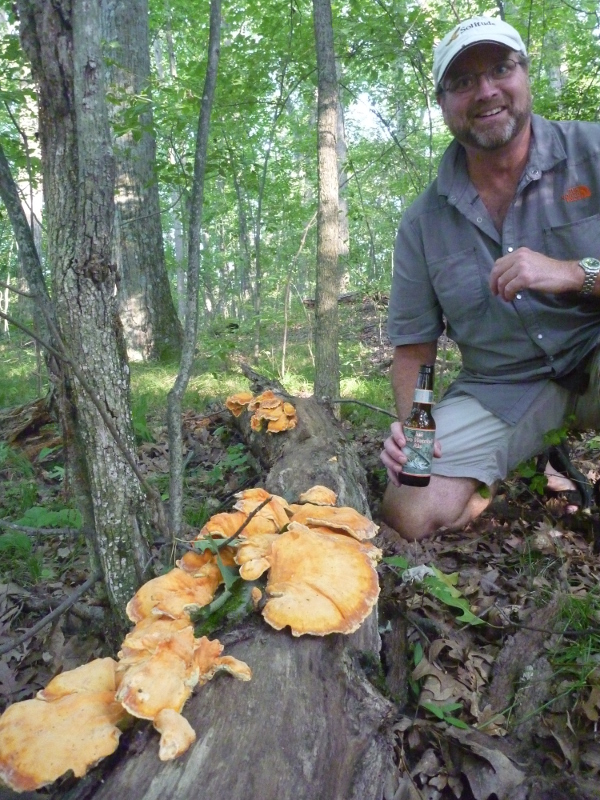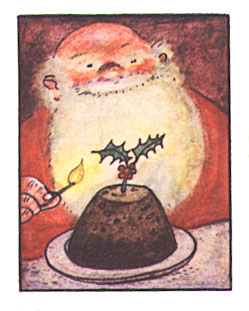More Photos Below!Gallery
Like many Michiganders I’ve long been a fan of Morel mushrooms. They’re such easily ID’ed mushroom — and one of the tastiest — so that’s what most locals pick. Spring is for mushrooms. …But they’re also kind of rare and really, really hard to see — but that’s part of their charm.
Well, I didn’t realize it, but the rest of the warm months are huge for mushrooms as well. And there are species that are just as distinctive — actually, much more so, and more common and VERY easy to see. It’s just that the other choice species are less well known. However, it might be that social media is helping them to become more popular. I’ve been studying some of them lately and as with morels several tasty species have no bad lookalikes that’ll hurt ya.
In fact, I’m thinking that based on my eating and reading that some of the others are even nicer than morels.
The main concept is to know what you’re doing. And it’s best by far to know somebody who knows and to go out with them at first.
Even morels do have risk factors worth knowing. There are three somewhat risky lookalikes — the False, the Half and the Beefsteak (Gyromitra). The false has a totally free/loose cap and the Half has a half-free cap. The Beefsteak has a “blobular” shape. Always google about mushrooms before eating!
It’s also worth noting that in my view mushrooms are fungi which seem also related to molds. Maybe this isn’t true but what is true is that people are more likely to have allergic reactions to mushrooms. I think it’s true that they simply are closer in nature to allergen-type things. Spores are often involved in allergies, right? It’s how I look at it. So even if a mushroom is safe YOU may well have a reaction. So always test a new species in a small amount before really eating them. Ideally, build up with 24-hour rests between. You wouldn’t have a literally toxic reaction but an allergic reaction can be unpleasant, and easily include nausea, etc. Then there is alcohol: it seems to be a known enhancer of allergic potential. People often find that morels are great with wine, for instance — but wine can result in an allergic reaction. So proceed carefully and in moderation.
Another “first principle” in eating wild mushrooms is LOOKALIKES. I choose to pick mushrooms for which there are no known poisonous lookalikes. I also like the types that have simple, clear ID methods. If a spore-print is needed to distinguish deadly from tasty, I’ll take a pass. I’m not sure there are many such, though. It’s interesting that tasty mushrooms tend to not be very related to deadly ones. And often nasty ones also LOOK or SMELL unappealing.
Also when you cook mushrooms “rare” isn’t an option. This won’t help with any tenderness aspect. Cook them until they give up their water. Mushrooms have a lot of water inside. They give off a liquor, in effect. You can pour this off if you like. Then cook them another couple minutes. Really, don’t eat them until they have “cooked off” their moisture. “Al dente” is not a mushroom virtue.
The types that I have discovered more recently, after having been a morels-only shroomer my whole life, are:
*Chicken of the Woods — bright orange or yellow, large, growing to several pounds. What luck! Easy to see and to ID! Cook until well-done. Undercooked they are not good. Flavor: like a light chicken. Seasoned egg batter fry. Grows on dead oak (more later, but avoid any on evergreens).
*Hen of the Woods — lame name. Better name: Maitake. Looks like a fluffy brown hen. Very tasty. Look up recipes. Grows at base of dying oak. Basketball sized, up to several pounds.
*Oysters
*Puffball — a friend loves them. I haven’t had good luck yet but will try more.
*Chanterelle — I haven’t found any but friends have. Solo growing. There IS a somewhat lookalike for this one that grows in clumps. Google the traits, but you want false gills — branching “melted” ridges that are part of the cap and stem.
*Pheasantback or Dryad’s Saddle. Looks like a pheasant back. When cut, smells like cucumber or melon. You want the tender ones that break apart easily. If a bit old they become very tough: avoid. Shelf-like shape growing out from sides of dying trees. Tasty when cooked hard.
***
Yesterday I went out picking with pal Dave Jessop and he found 2 really choice types which he prepped, cooked and served for our dinner. Scrumptious! They were the Chicken (Sulphur Shelf) and the Comb Tooth.
These aren’t all that well-known of mushrooms but they are out there. And they seem to return to places where they’ve been found. When you take them try to cut them off and leave plenty of stalk behind.
Dave and I went biking and also canoeing and fishing. Plus we went mushroom hunting. When he spotted the Chickens growing in a long line on a log Dave hooted and hollered: it was quite a find. And when he noticed a Comb Tooth on a log that we biked past he crashed into a tree because he was so startled by such a choice find. So these are not trivial food discoveries.
CAUTION: As in all things mushroom, be sure to study well for yourself before eating then also go with an expert and doublecheck. Particularly research the lookalike options.
Dave does spore prints and other testing for anything he’s not positive about and experienced with. A good plan. But, of course, make sure you understand spore testing, too, before relying on it. The common fall species I mention are readily enough taught to be ID’ed without the need for spore testing.
As regards the Chicken, there is one simple rule: get ’em growing on Oaks not Evergreens. I’d guess it’s doubtful, tho, that Midwesterners would see the Evergreen one — it lives in the NE U.S. — and it’s not dangerous, just more likely to cause allergy. leslieland.com/2009/09/hunting-laetiporus-sulphureus-the-sulfur-shelf-or-chicken-mushroom/]
He sauteed the thinly sliced Comb Tooth — perfect. Like crab! He did up the Chicken as Chicken Mushroom Parmesan — double floured in egg then fried and served on pasta with Marsala sauce. …Wow!
I’ve also recently had Dryad’s Saddle or Pheasant Back. It also seemed like it would be really tasty — but ya gotta pick em fresh (easily broken, not rubbery) and cook em fresh.
Then there’s Hen of the Woods, which Dave says is the best of all — in its own way. It seems like there are different types of shroom: some are meat-like, others more mushroomy, creamy, saucy — more like store-bought types.
Dave also says the puffball can be fine, if handled right. I cooked one last fall and it was nasty. I’ll try again. Dave says to saute to crispy on outside, creamy on inside.
But back to the Chicken and the Comb Tooth. Ya know, I’m now almost more inclined to say that chicken meat tastes more like Sulphur Shelf than the other way around. It’s really a perfect food, perhaps more delectable than chicken itself. And I might say that crab tastes something like Comb Tooth, because that mushroom, too, seems perhaps more ideal as a food than crab.
Now some might say that shrooms don’t really have the nutrients that meat does and in some ways that’s true, but shrooms have other benefits to offer and perhaps some unknown ones as well. They are among nature’s most potent items. So I doubt they’re as “empty” in positive food value as some might think. They do have vitamins. And they’re good for the immune system. And who knows what else. (Comb Tooth apparently helps nerve regeneration.) They are still mysterious.
Here’s a link to some nifty details on the nutrient values of shrooms. www.sierrapotomac.org/W_Needham/TheMushroomChronicles_Nutrition.htm Turns out, the only thing they’re low on is calories. And, catch this: they’re high in chitin which was found to cut body fat by 8% and cholesterol by 30% in a month. Huh? …A little googling seems to support the idea that chitin has this effect when used as a supplement. It’s not like you have to eat only mushrooms.
I’m also starting to encounter Oyster shrooms — so that’s another specie to consider.
Googling brings up a few other species as well.
Always make your first go-rounds with an expert! And double and triple check your finds. Study hard for dangerous lookalikes!
Here are some “top 10” lists by enthusiasts. Likely amateurs won’t hunt from this list but it’s handy to learn more and to familiarize and get tips for picking: www.mushroomhunter.net/top_10.htm.
Here’s another link to lots of autumn edibles. Again, probably not a beginner’s list, but will confirm the basics within. mdc.mo.gov/discover-nature/outdoor-recreation/mushrooming/edible-mushrooms
Another great link with a simple list of safe edibles at the end: americanmushrooms.com/edibles1.htm
There’s another great link out there that I can’t refind right now titled something like “Favorite Fall Five” mushrooms for autumn harvesting.
Lots of good ones here: mdc.mo.gov/discover-nature/outdoor-recreation/mushrooming/edible-mushrooms
First big Chicken found near base of oak tree where Dave found one the previous year. The detour we took in our paddling to check the same lakeside tree paid off. It was partly under a partier’s littered pizza box.
Nice.
Then Dave spotted this log FULL of Chickens and hollered and jumped around.
We picked them and turned them over to show their bright sulphur yellow under color — thus their “Sulphur Shelf” name.
Back at the ranch Dave served homemade tamales while he whipped up some corn and shrimp chowder. Mmmm!
Here’s the Comb Tooth. (Next to fine reading.)
Sauteed Comb Tooth with Shrimp/Corn Chowder. …Whoa!
Chicken Mushroom Parmesan. …So tasty!



